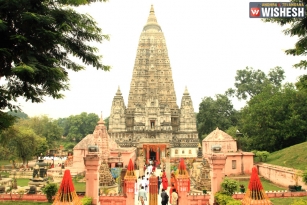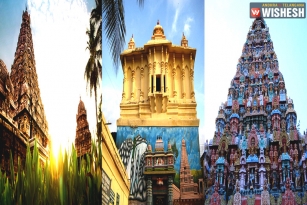
Sambalpur is a city in Sambalpur district in the Indian state of Orissa. It lies at a distance of 321 km from the state capital Bhubaneswar. Sambalpur is the headquarters and the largest city of Sambalpur district. It is also the commercial capital of Western Orissa. The District is surrounded by Deogarh District in the East, Bargarh and Jharsuguda Districts in the West, Sundargarh District in the North and Sonepur and Angul Districts in the South. Sambalpur derives its name from Goddess Samaleswari, an incarnation of Shakti and the presiding deity of the Samaleswari Temple located in the city which is one of the major tourist attractions. Sambalpur derives its name from that of the Goddess Samalei who is regarded as the reigning deity of the region. In history, it has also been known as 'Sambalaka'.
Sambalpur has been a great centre of diamond trade. Kendu leaf (Diospyros Melanoxylon) is also produced in Sambalpur. Tendu leaf is one of the most important non–wood forest products of Sambalpur and is also called as green gold of Odisha.
Sambalpur celebrates many beautiful festivals round the year. Sital Sasthi is observed in the month of June. This festival is the marriage ceremony of Lord Shiva and Parvati. Nuakhai is the most important social festival. Bhaijiuntia festival is celebrated on the Mahastami Day of Durga Puja. The Puajiuntia festival is observed by mothers to invoke the grace of Lord Dutibahana for the long life and prosperity of their sons. Other religious festivals which are observed include Shiva Ratri, Dola Yatra, Durga Puja, Janmanstami, Diwali, Ganesh Puja and Saraswati Puja.
Sambalpur District experiences extreme type of climate with 66 rainy days and 153 centimeters rainfall on an average per annum. Most of the rainfall is confined to the months from June to October due to south west monsoon. Mercury rises upto 47 degree C during May with intolerable heat wave and falls as low as 11.8 degree C during December with extreme cold.
History
The history of Sambalpur, as depicted by eminent historians, is full of events including Indian freedom struggle representing the different sections of society. Sambalpur is an ancient district of India, which survived even in the prehistoric age and holds a very important place in the history of Orissa and India.
Sambalpur is mentioned in the book of Ptolemy (Claudius Ptolemaist) as Sambalaka on the left bank of river "Manada", now known as Mahanadi, other evidence are available from the records of Huan Tsang and in the writings of the celebrated King Indrabhuti of Sambalaka of Odra Desha or Oddiyan (oldest known king of Sambalpur), the founder of Vajrayana Buddhism and the Lama cult. He has written the book Jnanasiddhi.
French merchant Jean Baptiste Tavernier (1605–1689) in his travel account wrote about the numerous famous diamond mines of Sumelpur (Semelpur), the present day Sambalpur. He states that, 8,000 people were at work in these mines at the time of his visit, in the dry season at the beginning of February.
History reveals that in 4th century Samudragupta defeated King Mahendra of Koshala, the kingdom that included Sambalpur. During 5th and 6th centuries Sambalpur came under the rule of Sarbhapuriyas. In 7th century Panduvansi king Trivaradeva took the charge. Further, towards the close of 9th century king Janmajaya I Mahabhavagupta extended his empire. Later his dynasty came to be known as Somvanshi dynasty. At the end of the Somvanshi rule, Sambalpur was occupied by the Kalachuris of Ratnapua. Acrid fight was seen between the Kalachuris and the Gandas in 13th century. Later on, the Gandas occupied Sambalpur.
In mid of 14th century Ramai Dev laid the foundation of Chauhan rule in western Odisha. However, the Chauhan rule ended in April, 1800, when Sambalpur was occupied by Marathas. Sambalpur District was occupied by British on 2nd January, 1804. Finally it passed on to the British rule in 1817. The following years witnessed the movements of the Kandhas and Binjhal Zamidars against the British. The erstwhile Sambalpur District was divided into four Districts on 31st March, 1993.
Vajrayana Buddhism
Although it is generally accepted that Tantric Buddhism first developed in the country of Uddiyana or Odra Desha under King Indrabhuti, there is an old and well known scholarly dispute as to whether Uddiyana or Odra was in the Swat valley, Orissa or some other place.
Indrabhuti, the oldest known king of Sambalpur founded Vajrayana while his sister who was married to Yuvaraja Jalendra of Lankapuri (Subarnapura) founded Sahajayana. These new Tantric cults of Buddhism introduced Mantra, Mudra and Mandala along with six Tantric Abhicharas (practices) such as Marana, Stambhana, Sammohana, Vidvesan, Uchchatana and Vajikarana. The Tantric Buddhist sects made efforts to raise the dignity of the lowest of the low of the society to a higher plane. It revived primitive beliefs and practices a simpler and less formal approach to the personal god, a liberal and respectful attitude towards women and denial of caste system.
From the seventh century A.D. onwards many popular religious elements of heterogeneous nature were incorporated into Mahayana Buddhism which finally resulted in the origin of Vajrayana, Kalachakrayana and Sahajayana Tantric Buddhism. Tantric Buddhism first developed in Uddiyana, a country which was divided into two kingdoms Sambhala' and Lankapuri. Sambhala has been identified with Sambalpur and Lankapuri with Subarnapura (Sonepur).
The Leaning Temple of Huma
The Leaning Temple of Huma is located about 25 km from Sambalpur. The 17th century temple of Huma leans at an approximate angle of 47 degrees to the west.
Samaleswari Temple
This is the main temple of Goddess Samaleswari, located on the banks of river Mahanadi. Sambalpur owes its name to her.
Ghanteswari Temple
Located 33 kilometres south-west of Sambalpur and on the bank of river Mahanadi, this temple played an important role for navigation in the past. It was called a light house without a light. A temple also existed here, of Goddess Ghanteswari from whom the place got its name. Earlier there were some large bells on this spot and with the help of wind those created enormous sound which made the navigators aware of this treacherous spot. This area being the conglomeration of three streams of water of the Mahanadi River, the water current here is very dangerous forming a whirlpool. Here the wind blows quite heavily which caused the bells to produce sound. The specialty of this temple area is thousands of bells hanging everywhere, the only place of its kind in Orissa.
By Premji

















